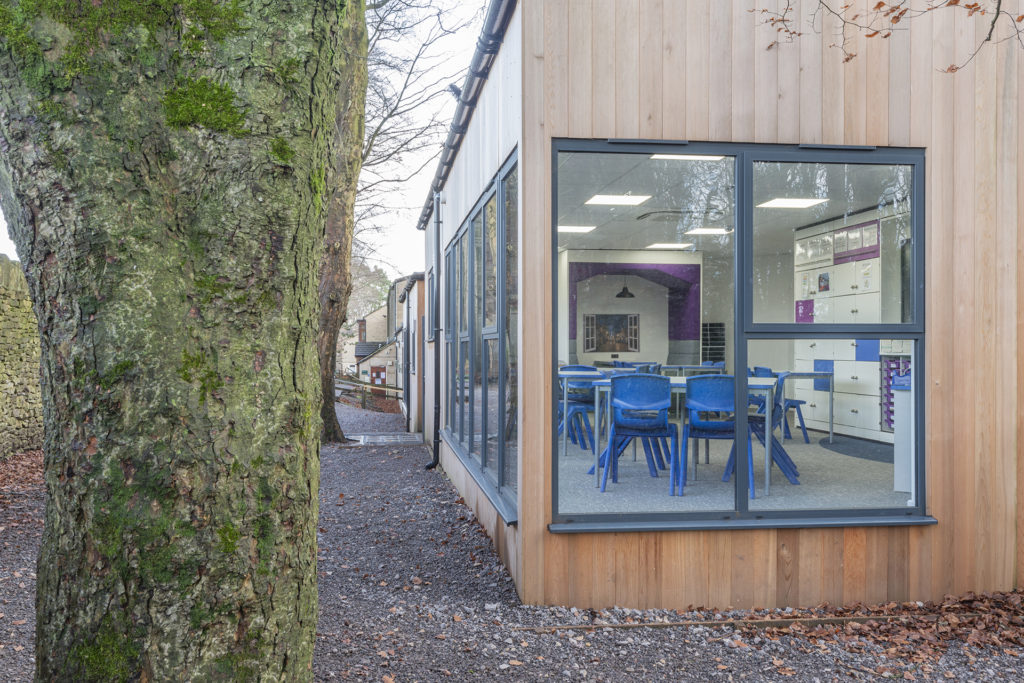Natural light
The benefit of natural light is well documented. Yet despite this, it is rarely considered an important element of classroom design. At best, classrooms employ a selection of lighting, with some thought directed towards ensuring the fittings are appropriate for the tasks being completed. But at worst, all that exists is a single bank of switches to simply turn the lights on, and off.
It’s crucial to evaluate the variety of light in a setting. As well as making sure there is sufficient natural light, it can be important to reduce exposure to the blue haze emitted from screens. Research has presented alarming statistics on the negative impact that frequent and prolonged exposure to this electronic blue light can have, and increasing the presence of natural light can go a long way to counteracting these negative effects.
Whilst in an ideal world all light flooding into learning areas would be natural, the reality obviously calls for some compromise. But this compromise doesn’t have to occur at the expense of the ambience, simply making the choice to install natural daylight bulbs can have an instantaneous impact on learning.
And when the opportunity to bring light inside does present itself, don’t be afraid to make a statement. Large glass walls, funky sky-lights, sustainable light ports, and windows in interesting shapes, can all be features of a modern and forward thinking classroom.
Fresh air
Just as natural light is important, fresh air provides its own very obvious benefits. The old adage suggests that you should spend an hour in nature every day, unless you are stressed, in which case you should spend two. In most schools, the opportunity to spend two hours immersed in the natural environment every day is not feasible, which is why an effort to waft in some outside air is always beneficial. This can be achieved in a variety of ways. Clever child-friendly bi-fold doors can instantly remove barriers to the outside world, injecting a much-needed burst of fresh air inside a room. Large sliding doors and movable glass partitions are also worth considering as a way to get fresh air circulating.
Natural materials for furniture
The presence of natural materials in an environment is an excellent way of establishing a connection with the living world. By simply including items of wooden furniture, the children should begin to respond to the calmer ethos and atmosphere that is presented to them. And although you might initially pay more for a piece of solid wood furniture, wood’s natural grain guarantees that each piece of furniture is unique. As part of nature-connected interior design, wood can transform the mood of a room creating a homely, welcoming feel and a truly ‘organic’ sense.Natural materials for learning resources
Not only do natural materials create a more visually appealing space, they also serve the purpose of fostering a link to the natural world, which is especially important in more urban schools where exposure to nature can be limited. As well as switching plastic resources for those produced from natural materials, be sure to offer actual items from nature as play materials. Objects such as pine cones, leaves, and dried flowers, can all be used to enhance creative play and exploration. The more time children spend around these materials, the more comfortable they are with them, eventually coming to prefer them to the unsustainable, non-environmentally-friendly plastics. Basic values are being built and shaped, however subtle they might be.



